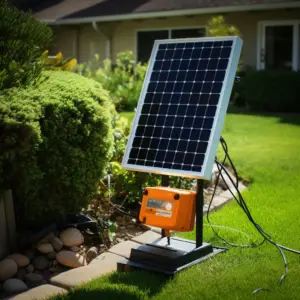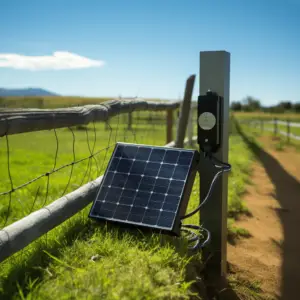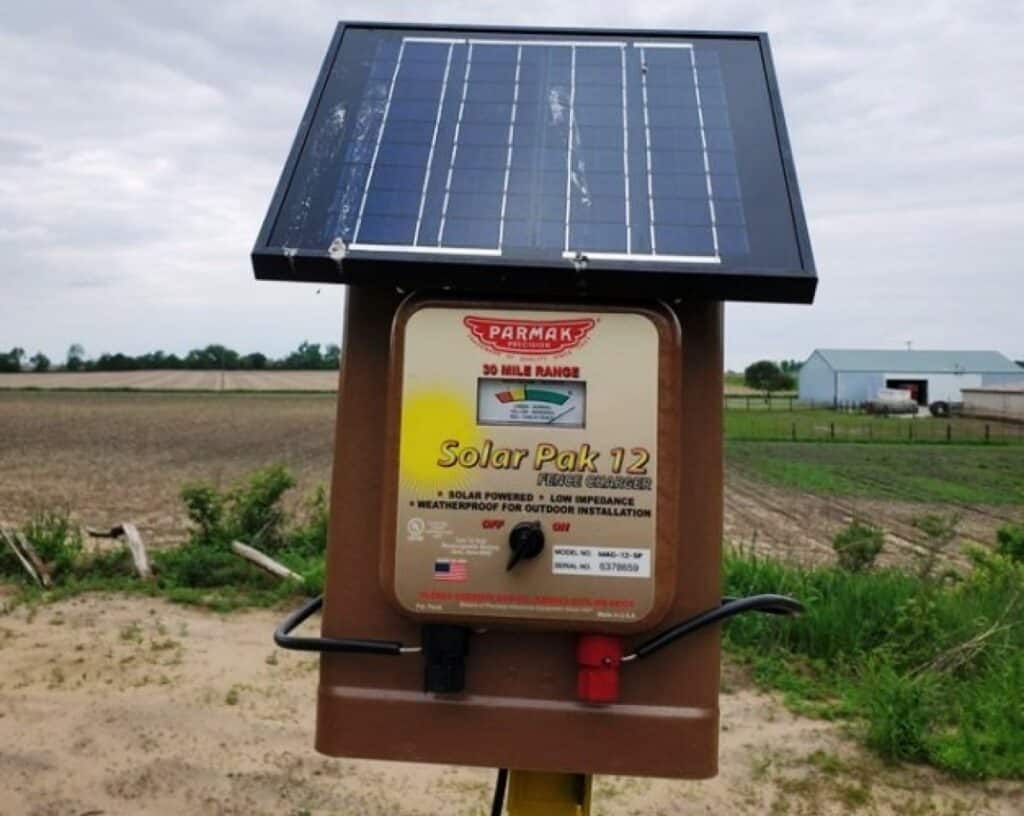Parmak Solar Fence Charger Problems, Parmak solar fence chargers are designed to provide power for your electric fence. These chargers work on a 6 or 12 volt system and use solar panels to collect sunlight and convert it into electrical power to recharge the battery.
While they work flawlessly most of the time, they can develop complications over time and stop working. Below are some of the most reported Parmak solar fence chargers problems and how to fix them.
Common Parmak Solar Fence Charger Problems
Table of Contents
Parmak charger was working fine but now doesn’t turn on

This is one of the most depressing problems because there are no warning signs. You just try to use it one day, and it won’t turn on. Luckily, this problem is often minor and easy to fix.
How to fix
The best option is to check if you still have a valid warranty. If that’s the case, take it for repair or replacement. If not, here are some fixes you can try.
Test the fencer output
You can do this by powering the fencer from a standard 12V automotive battery for a 12V fencer or a standard 6V lantern battery for a 6V fencer. Make sure you rig a wire while observing polarity.
Test the battery
Remove the battery and check the voltage with a voltmeter. A good 6V SLA battery should read a minimum of 6.2V, while a 12V one should read at least 12.4V. If a 6V battery reads 4 volts or less, it has most likely failed. Similarly, if a 12V battery reads 10V, it has likely failed. Before replacing a faulty battery, connect it to a standard 6/12V automobile charger to see if it will take charge.
Replace the battery
If the charger takes charge, reinstall it and see if the fencer output becomes hot. If the fencer fails output, replace it. Else, test the battery while the fencer is charging it. The voltmeter reading should be around 13.5V for 12V and 6.7 for 6V. If the reading doesn’t meet these minimums, the charging system has most likely failed.
On the other hand, if the battery fails to charge, test the fencer with an alternate power source. If it works, replace the battery.
12v solar charger is not clicking when turned on
Sometimes you turn on the solar charger, but it doesn’t click. This, too, is nothing to worry about and has a relatively easy fix.
How to fix
Disconnect the charger from the fence and turn it on. If the fencer works, it’s a fence issue like a broken wire or a short. If the fencer doesn’t work, the issue most likely has an issue and requires a PCB or service.
Troubleshooting electric fences
Sometimes the best way to avoid fence charger problems is to test your electric fence and troubleshoot it regularly. For example, when you find your fence is running low on voltage or has lost power, you will need to determine what has gone wrong.
It’s best to check the problems in the order below. That’s because some of the broad problems are checked first. You should also have a fence tester ready to test the fence properly.
First test: Battery/power check
Parmak Solar Fence Charger Problems electric fence is completely depowered, the power source might be the issue. Here’s how to check if your power sources are delivering the power:
Outlets
You can’t use your fence tester on outlets. However, an easy way to test if the outlet is working correctly is to plug in another electrical device, like a light. If the item doesn’t power properly, call an electrician. The outlet should be providing between 105 and 125 volts.
Solar
Use your voltmeter to test the battery voltage. If it’s not performing as expected, you need to replace it. Most solar batteries are built to last around 1000 days (3 years.) After that, it’s advisable to get new ones.
Additionally, a solar battery might lose its charge after long periods without sunlight. A 6 volt battery should test a minimum of 6V to be able to energize a charger. Likewise, a 12 volt battery should test a minimum 12V.
Second test: Terminal test
The terminals are posts that are used to attach hook-up wires. Testing them can confirm if the energizer is outputting energy properly.
Follow these steps to test the terminals.
- Turn off the power to the energizer.
- Disconnect the hook-up wires from the charger.
- Turn the power to the energizer back on.
- Use your digital voltmeter to check the voltage.
- If the reading is under 2000 volts, the energizer has a problem.
- Over 2000 volts, the energizer is working properly.
Third test: Ground rod test
Many poor-performing fences can be blamed on inadequate grounding. Every ground system should have at least three ground rods for good performance.
If the system is set up in rocky or sandy soil, more ground rods should be added. Frozen soil also hinders fence operation.
Follow these steps to test the ground system:
Connect your fence and ground hook up wires and power them.
Use a voltmeter to check the voltage on the ground wire.
If the reading is more than 400 volts, add more rods or deepen the existing ones. Test after the adjustments.
l Less than 400 volts means the system is adequately grounded.
Fourth test: Hook-up wire test

The fire hook-up wire runs from the charger’s positive terminal to the fence. A second hook-up wire runs from the negative terminal to the first ground rod. Both need to be securely connected to the charger and the destinations. Similarly, conductivity must be properly established.
Here are the steps to test the hook-up wires:
- Turn off the power to the charger.
- Ensure the hook-up wires are securely connected to the charger and the terminals. If not, reattach them and reconnect the power to see if it solves the issue.
- Keep the hook-up line connected to the charger and disconnect it from the fence. Leave the ground rod hook-up line attached.
- Turn the power back on and test the detached hook-up line with a voltmeter.
- If the reading is less than 1500 volts, the wire is flawed and somehow grounding itself.
- More than 1500 volts means the wire is okay.
In conclusion
A Parmak charger is a great way to power your electric fence. This is mainly due to the warranty and the overall quality of the materials used. If the fixes above don’t work, be sure to contact an electrician.


